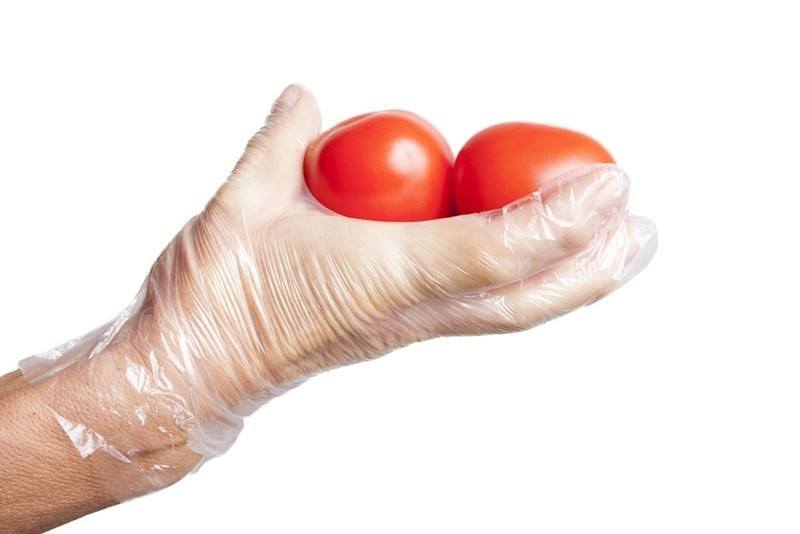This content has been archived. It may no longer be relevant
The Right Gloves for the Job: Part III Food Service – The food service industry has many of the same hygiene and contamination concerns of the food processing industry. Food service encompasses anywhere food is served. Sit-down restaurants, food trucks and college campus cafeterias are all part of the food service industry. In these and similar locations, food is prepared and served, and consumers often see workers having direct contact with the food.
Due to the nature of the food service industry – workers directly hand food to consumers – disposable glove usage in this sector is common. The U.S. Federal Drug Administration (FDA) requires all employees to wash their hands if they make contact with food. However, employers can only partially monitor their employees hand washing practices and hand washing may not always be enough to stop the spread of germs from hands to food. Disposable food service gloves are useful in the food service industry because employers can visibly monitor their workers’ food safety practices, and consumers get peace of mind that there is a barrier between food service employees’ hands and their food.
“The FDA recommends the use of barrier protection such as disposable food service gloves to stop the spread of germs in the food service industry.”
One key facet of the food service industry is workers tend to switch between various light-duty tasks, and they need a disposable glove material that can accommodate their workflow. That is where polyethylene (PE), also known as poly, and polyvinyl chloride (PVC), also known as vinyl, gloves come in.
“Poly gloves have a looser fit so they are easier to don and doff.”
A looser fit at an affordable price with poly gloves
To avoid cross contamination, food service employees switch gloves often. If an employee were to go from preparing food to serving food, for instance, he or she would need to change gloves. Given the fast pace that can be common in this industry – during a lunch-hour rush, for example – these workers need a glove they can slip on and off quickly. For instance, sandwich shop workers use new gloves for each customer.
Poly gloves, which are latex free, fit this description. Disposable food service gloves are made from two sheets of polyethylene film. The sheets are seamed and sealed with heat to create the gloves.This glove material is thin and inexpensive. Considering employees switch gloves often, there is no need to use a more heavy-duty glove material such as nitrile or latex. Poly gloves are powder free. They do not conform to the hand as closely as other glove materials for easy donning and doffing. However, this feature also means less dexterity, but the gloves can be textured for better grip.
“There are antimicrobial versions of vinyl gloves, which stop the growth of microorganisms.“
More dexterity with vinyl gloves
A staple in the food processing industry, latex-free, powder-free vinyl disposable gloves are a staple in the food service industry. Like poly gloves, vinyl products are affordable and suitable for both food processing and food service applications. There are also antimicrobial vinyl gloves, which stop the growth of microorganisms. This feature is beneficial for preventing the spread of harmful bacteria that can contaminate the glove and other surfaces.
Vinyl gloves have two advantages compared to poly gloves: They conform more closely to the hand and provide better dexterity. If an employee needs to handle a small amount of garnish, for example, he or she can have an easier time grasping the correct amount with vinyl gloves.
Why not latex or nitrile?
As with any industry, end users and consumers can have latex allergies. Even if employees are able to wear the gloves without trouble, they could transfer latex proteins to the foods they handle, thereby causing a consumer to experience an allergic reaction. Nitrile is latex free, but its level of durability and price are not practice for gloves that are going to be changed often.
In the end, poly and vinyl gloves offer the value and ease food service workers need.






